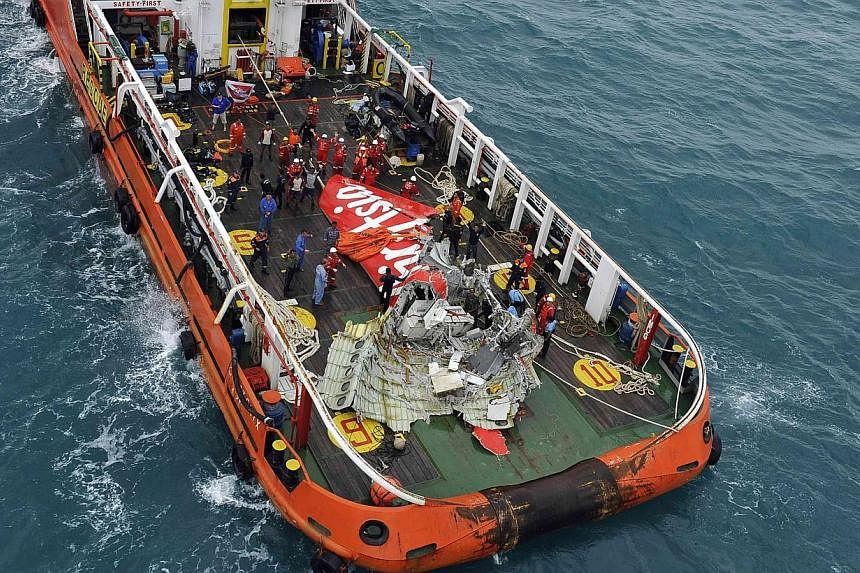Forty minutes into its two-hour flight from Surabaya to Singapore on Dec 28, contact was lost with AirAsia flight QZ8501.
With the black boxes recovered on Jan 12 and 13, investigators are now piecing together what happened in those last moments before the Airbus A320-200 plummeted into the Java Sea.
Indonesian investigators may release some initial findings about the crash on Jan 28, but the full preliminary report will not be made public.
Here's what we know so far:
Take off and request to climb
The flight took off from Surabaya's Juanda International Airport at 5.35am (Indonesian time) that Sunday morning with 162 people on board.
At 6.12am, the pilots requested to climb to 38,000ft from 32,000ft to avoid storm clouds.
Bad weather and heavy air traffic
The jet was passing through an "intertropical convergence zone", an area around the equator where the north and south trade winds meet, and thunderstorms are common.
The pilots were not given permission to climb as there was heavy air traffic in the area. It was the lowest flying plane in the area, and in the crowded skies nearby, there were about seven other planes. They include two other AirAsia flights, three Lion Air aircraft, an Emirates jet and a Garuda plane.
Reports last month also said that at 353knots, QZ8501 was flying slower than other airliners in the vicinity.
Rapid climb
Two minutes later, Jakarta responded by asking QZ8501 to go left 7 miles and climb to 34,000ft. There was no response from the cockpit.
In those last moments, the aircraft was climbing 6,000ft a minute, just before it stalled. The climb is two to three times the normal ascent rate for a commercial liner.
In an aerodynamic stall, the plane's engines can be running, but there is not enough air flowing over the wings to lift the plane up. This can happen when the nose of the plane is pointed upwards for too long.
An Indonesian investigator also said that several alarms - including one that indicated the plane was stalling - were screaming as the plane went down. The pilots were busy trying to recover in the background, but their voices were drowned out by the sound of the alarms.
Weather and human factors may play a part
The sharp ascent could mean there were strong winds and weather buffeting the plane, experts said.
If the plane was caught in an updraft, the pilots may not have been aware why it was climbing so fast, said CNN aviation analyst Mary Schiavo.
The last moments recorded had "sounds of machines and sounds of warnings", said Indonesian investigators.
"The warning alarms, we can say, were screaming, while in the background they (the pilot and co-pilot) were busy trying to recover," one investigator said on Jan 21, adding the warnings were going off "for some time."
Icing not cause of crash
The plane climbed steeply very rapidly but its crash was not due to icing, said Mr Tatang Kurniadi, the chief of the agency investigating the accident, in debunking an earlier suggestion.
"No similarity with Air France 447. No indication (of icing)," Mr Tatang, who heads the National Transportation Safety Committee, said on Jan 21 during a discussion on aviation safety with foreign journalists.
Terrorism unlikely
Terrorism is extremely unlikely, as no explosions, threats or loud bangs registered on the cockpit voice recorder.
The aircraft was detected by the ATC's radar for another three minutes before disappearing at 6.18am. No distress signals were radioed.
Investigators from the National Transportation Safety Committee were now looking at the "possibility of plane damage and human factors".
Sources: Agence-France Press, Reuters, BBC, CNN, The Jakarta Post, theaviationist.com

